Last month, news broke of the first rodent to go extinct due to man-made climate change. The Bramble Cay melomy, a small rodent native to Australia, was officially confirmed extinct by the Australian government on February 18th.
The reasoning behind its extinction has proven to be man-made climate change. According to National Geographic’s Brian Clark Howard, Ian Gynther from Queensland’s Department of Environment and Heritage Protection is one of many researchers who backs this claim.
“The key factor responsible for the extirpation of this population was almost certainly ocean inundation of the low-lying cay, very likely on multiple occasions, during the last decade, causing dramatic habitat loss and perhaps also direct mortality of individuals. For low-lying islands like Bramble Cay, the destructive effects of extreme water levels resulting from severe meteorological events are compounded by the impacts from anthropogenic climate change-driven sea-level rise.”
And although the extinction of the Bramble Cay melomy is something to talk about right now, this comic by First Dog on the Moon is a perfect illustration of how we never truly learn our lesson after we mourn the loss of a species.
While this extinction hasn’t taken place in West Virginia, or even on this continent, it’s a lesson and a warning of what is to come in the future if changes aren’t made, and an opportunity for us to reflect on the species closest to home that are in need of extra care.
To begin with, there are many species of bats that are endangered in West Virginia including: the Virginia big-eared bat, the gray bat, and the Indiana bat.
The Virginia big-eared bat resides in parts of western North Carolina, eastern Tennessee, southwestern Virginia, eastern Kentucky, and southern West Virginia. In terms of what is endangering this bat in particular, humans are the direct result according to the U.S. Fish and Wildlife Service.

“The major causes of the species’ decline are loss of habitat, vandalism, and increased human visitation to maternity roosts and hibernacula. Virginia big-eared bats are extremely sensitive to human disturbance. Even slight disturbances can cause adults to abandon caves, abandon young, and force bats to use valuable energy reserves needed to survive hibernation.”
The gray bat is extremely rare in WV, and the only citing of it in Pendleton County was considered accidental, however, the state still recognizes it as an endangered species.

The Indiana bat resides in WV significantly more, with nearly 21,000 wintering here and dwelling in Pendleton, Tucker, Boone and Kanawha counties.

For these two species in particular, they are currently being threatened by white nose syndrome, a fungal disease that affects hibernating bats. According to the White Nose Syndrome Response Team, “It attacks the bare skin of bats while they’re hibernating in a relatively inactive state. As it grows, it causes changes in bats that make them become active more than usual and burn up fat they need to survive the winter.”
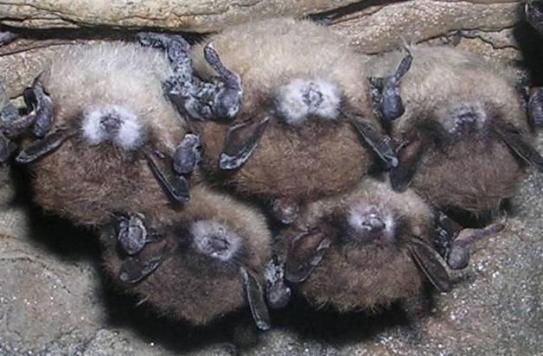
According to The Center for Biological Diversity, the endangerment of these bats due to white nose syndrome has the ability to affect many species in our ecosystem.
“With the disease’s appearance in the southern Appalachian region, white-nose syndrome has the potential to afflict the extremely rare, federally listed Virginia big-eared bat, whose range is limited to West Virginia, Virginia, Kentucky, and North Carolina.
While it’s very difficult to visit the caves and hibernacula where these bats live due to the adverse and dangerous effects of human disruption, there are refuges set up across the nation that provide habitats for gray and Indiana bats in order to help ensure their safety and educate the public about them.
There are also many aquatic animals that are endangered in this state such as the Guyandotte River crayfish, the candy darter, and the diamond darter.
The Guyandotte River crayfish can only be found at two sites in at Pinnacle Creek and the Clear Fork streams in Wyoming County, WV.
Erosion and sedimentation have both played roles in endangering this species, who, according to the U.S. Fish and Wildlife Service, is very important to other forms of life.
“Crayfishes, including the Guyandotte River and Big Sandy crayfishes, play an important role in stream environments by recycling animal and plant matter and serving as food for other wildlife, including sport fish. Keeping streams healthy for crayfish also benefits people by ensuring clean water for drinking, wading and fishing. Ongoing erosion and sedimentation have made many streams within their historical ranges unsuitable for the crayfishes.”
A bright, beautiful freshwater fish that swims through the streams of Appalachia is the candy darter. Unfortunately, almost half of the population has decreased, according to the U.S. Fish and Wildlife Service
“Nearly half of the 35 known candy darter populations have disappeared since the species was first described in 1932. Candy darter habitat historically declined when land conversion activities removed the forested and riparian habitat that sustained healthy stream conditions for the fish.”
Similarly, the diamond darter is in the same boat, with the only existing population of this species being found in the Elk River in WV. Unfortunately, it’s location is one of the reasons that it is being threatened. The U.S. Fish and Wildlife Service explains the effects of these darters inhabiting the Elk River.
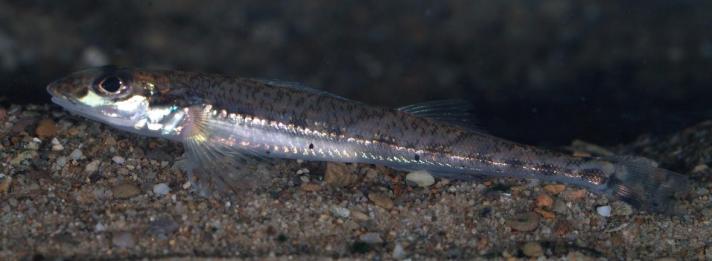
“Coal mining, oil and gas drilling, timber harvesting, all-terrain vehicles, improper sewage treatment, and stream bank erosion all occur in the Elk River watershed. Together, these activities compound the amount and type of pollutants flowing into the river, reducing the water quality and degrading the habitat needed by diamond darters.”
While it isn’t registered as an endangered species, it’s important to highlight one threatened species close to home, the Cheat Mountain salamander, who went face to face with the threat of extinction and came out alive after the U.S. Forest Service rejected a 10-mile segment of the proposed Atlantic Coast Pipeline.
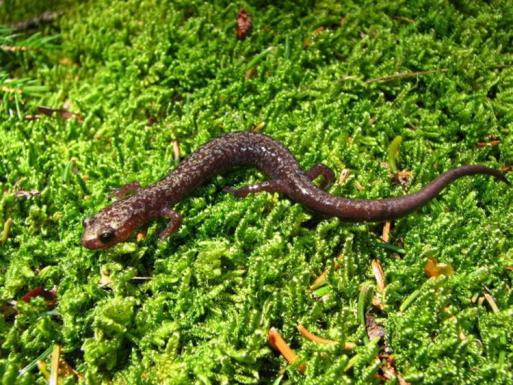
Finally, the rusty patched bumble bee is another endangered species in the state. It previously had a long history in West Virginia and 27 other states, but it can now only be found in only 5.
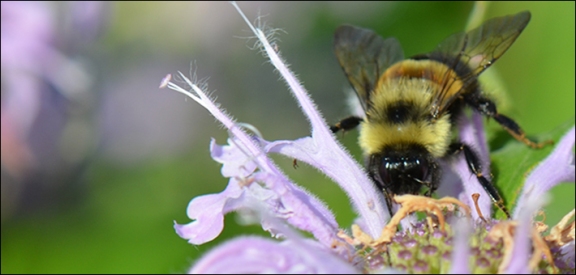
In the Recovery Outline for the Rusty Patched Bumble Bee by the U.S. Fish and Wildlife Service, climate change is one of the many things harming this species.
“The threats to the rusty patched bumble bee primarily fall into one or more of six categories: pathogens, pesticides, habitat loss and degradation (loss of floral resources), effects of climate change, competition with non-native bees, and the effects of small population dynamics.”
When thinking about the causes behind what’s endangering these animals, mountaintop removal is high up on the list. In a recent lawsuit filed by The Center for Biological Diversity against the Trump Administration for refusing to release public records concerning coal mining and endangered species in WV, mountaintop removal is cited as detrimental to Appalachian fish, crayfish, mussels, amphibians and insects.
“More than 2,000 miles of streams in Appalachia have been degraded by this mechanized form of mining, which employs far fewer people than other forms and perpetuates poverty by causing permanent and irreversible damage to the landscape.”

Why does it all matter?
As humans and predators, it’s our responsibility to look after the less powerful things around us. Besides wanting to save the world that we live in, it’s important to be concerned about endangered species due to growing extinction rates documented by the U.S. Fish and Wildlife Service.
“Normally, new species develop through a process known as speciation at about the same rate that other species become extinct. However, because of air and water pollution, forest clearing, loss of wetlands, and other man-induced environmental changes, extinctions are now occurring at a rate that far exceeds the speciation rate.”
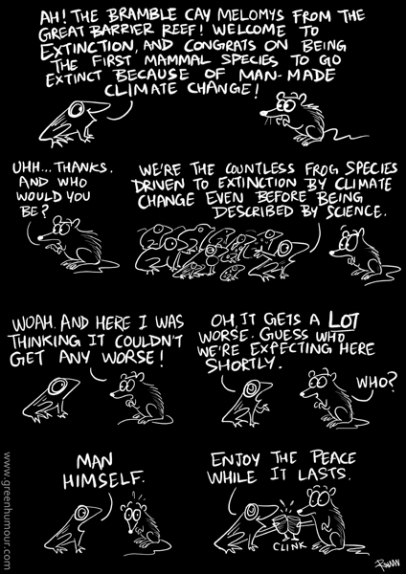
So while the Bramble Cay melomy is now out of sight, we shouldn’t let it be out of mind. One of the key steps in not letting history repeat itself is in never forgetting about it, and by never forgetting about these other animals, by keeping up to date and educated on them, we are able to ensure their safety. We can never get this animal back, but we can use its memory as a powerful lesson in not forgetting about the creatures who need extra protection.

First off, great story! The last paragraph – when you point out that we can’t the Bramble Cay Malomy back, but we can use its memory to motivate us to protect other animals – is so strong.
Secondly, I have a question about relatively minor point you made about mechanized mining. Basically, it seems like the only people who benefit from mechanized mining are coal execs. It doesn’t employ very many WV miners (because – mechanization), it pollutes our water and our air, it degrades our landscape, it impacts climate change, and now I’m learning animals are going near-extinct because of it. So are West Virginians in favor of this practice? I just can’t see how it benefits the average person in any way.
LikeLike
I thought this was an amazing story and kept me interested and wanting to read more the whole way through! With the talk of our environment lately, I am happy you shed light on these animals in West Virginia. How is extinction of animals in WV compared to animals in other states?
LikeLike
This was a really great story. I heard about the Bramble Cay Melomy going extinct on a podcast and they too went into a discussion about other species that are at risk. I really enjoyed how you were able to bring this story back to West Virginia. Whenever I walk around Morgantown, Sunnyside in particular, I am amazed at the amount of trash that is left around. This did a great job of showing the real time affects this and other factors are having.
LikeLike
I thought your connection to the Bramble and the endangered animals of WV was a great way to introduce the topic and give it such a timely key. I think the bat map was also a great add. Since it was longer post, I also thought the sub headings were a good idea to help readers keep up with the story. But the post was very long and very information heavy which is not a bad thing just could be a lot for some readers.
LikeLike
I liked your timely connection between the bramble and the endangered WV animals. The bat map was a great add as well as the subheadings to keep the readings understanding what each section is referencing. This was a jam packed piece with a lot of great information but could be a bit much for some readers.
LikeLike
This post has such a great use of sources! Yet, you took something that could be very scientific and bland and made it feel crucial and important, so well done! I really think that it is so important to recognize how human beings affect the wildlife of our animals because without them we suffer too.
LikeLike
First the structure and formatting of your entire story was great! I love the use of the map to creatively display the different locations of refugee places for these bats which kept me reading because I was able to interact and really connect with your post. The content was also very well tied into the Bramble Clay rodent in Australia which I feel like encompasses the whole point of our post which is environmental issues and how they’re relating back to Appalachia.
LikeLike